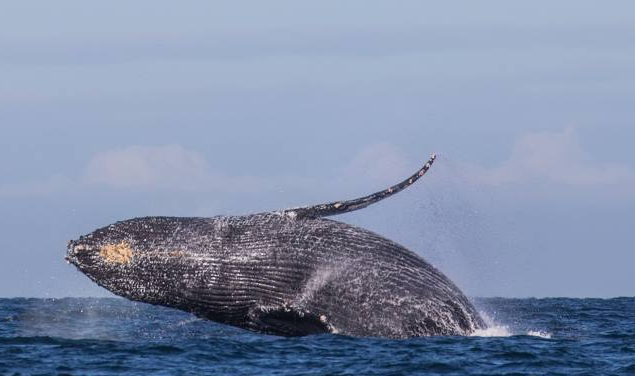
The human race will be amazed as researchers reveal that the world 's largest living animal, blue whale use their right fin to catch food, like how humans usually use their right hands to eat.
However on certain occasions, these whales shift the gears to the left to keep a keen eye on their prey. They feed on small crustaceans called krill which is the main food of blue whales and baleen whales.These marine mammals usually spin and dive for krills in millions at regular routines.
The report published in the Current Biology further says that these marine mammals don't spin and dive at random times. The creatures showcase specific preference over their right or left side that is equal to the behavior of handedness in humans.
The Marine Biologist Ari Friedlander University of California along with his colleagues analyzed the movement of 63 blue whales at the coast of California.They calculated more than 2,800 feeding plunges where these 80 feet long creatures take sharp turns or rolls.
While the whales were passing on a patch of krills , the team waited until these giant creatures surfaced on the ocean after a dive.Then they followed these mammals at a safer distance until they broke the waves
After that the team zoomed forward and struck accelerometer into the water. By this method, the scientists were able to slap devices on 63 whales. According to the result, they found out that most of the blue whales steer right into deep water in search of krills in a darker place inside the sea. But when the water level is between 10 and 100 ft, they prefer to roll on the left at a steep angle.
Researchers believe that these creatures keep an eye on their preys by moving left as their target tend to be present on the shallow level of the sea.
"These are the largest animals on the planet and feeding is an extraordinarily costly behavior that takes time, so being able to maximize the benefit of each feeding opportunity is critical," said lead author Ari Friedlaender, a cetacean expert with the Marine Mammal Institute at Oregon State University. He also added that left-sided rotation is a mechanism to help in preying on krills.
Researchers say that lefties are rare in the animal kingdom.Blue Whales are marine animal belonging to the family of baleen whales, which is the largest creature in the animal kingdom. Moreover, scientist are conducting further studies on these creatures.








